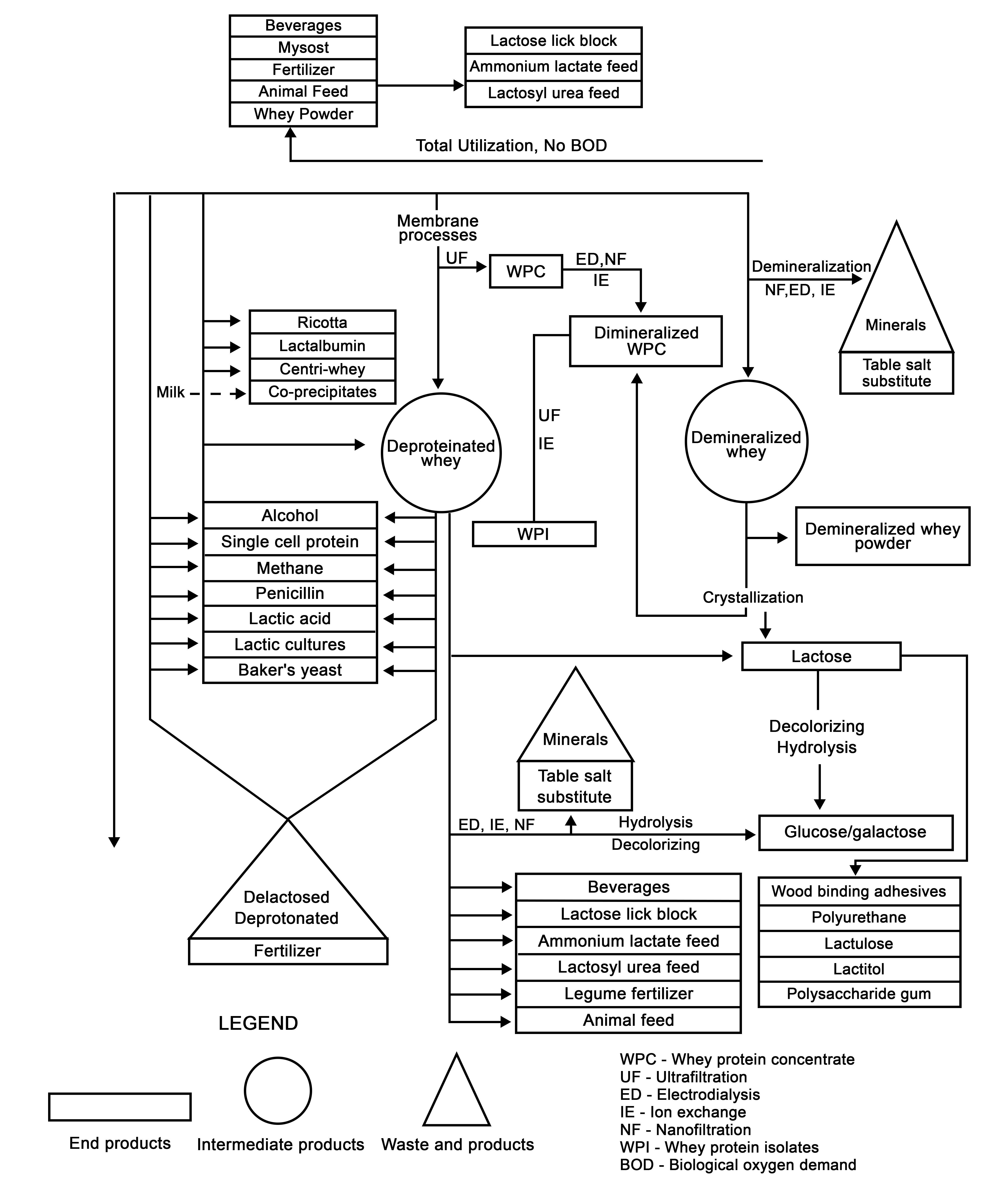Ways to Use Whey
26 Whey Processing
1. Whey uses
Cheese Yields are commonly around 10 to 15%, meaning that cheese making results in whey production between 85 and 90% of all milk processed into cheese, with more than 24 million tonnes of cheese produced in 2019 worldwide, that is a lot of whey! A few decades ago, whey was a serious issue in the dairy industry, it was dumped into sewage creating a huge environmental problem, due to its high biological oxygen demand.
Whey was not only an environmental problem, but it was also a financial lost for the industry. For years, a partial solution was used; whey was fed to pigs and other farm animals. Fortunately, research led to the understanding of whey properties and the development of ways to concentrate whey and separate whey components, making it practical and convenient to store, transport, and use whey and its derivatives. Whey processing therefore resulted in reduction of production costs and increased profitability for the dairy industry.
Whey can be transformed into many different products thanks to its composition.
2. Whey Composition
- Whey is around 94% of water; this is probably the main challenge; to facilitate shelf life, transportation, and storage of whey, a great amount of water needs to be removed.
- Cheese whey from full fat cheese contains about 0.3% of fat before it is separated
- Fat content is 0.04 to 0.06% after cream separation
- Protein: 0.7% including non-protein nitrogen; These proteins and mainly whey proteins have very small amounts of free caseins depending on how the cheese was made. You can look at the principal whey proteins in Table 9.3.
- About 0.5% can be recovered by heat precipitation
- About 0.6% can be concentrated by ultrafiltration
- Lactose: 4.8%
- Total solids: about 6%
3. Other Whey Properties
- Whey is a very diluted solution. There are two different types of whey depending on which type of cheese it was obtained from:
- Acid whey with pH < 5.0, obtained from the processing of acid cheeses such as Cottage cheese, Cream cheese, Quark
- High mineral content
- Difficult to process; uses are limited
- Sweet whey with pH > 5.0, obtained from most rennet coagulated varieties
- Utilization in Canada is near 100%
- Heating required to inactivate cultures and coagulating enzymes
- Acid whey with pH < 5.0, obtained from the processing of acid cheeses such as Cottage cheese, Cream cheese, Quark
4. General Processing Options
- Non-BOD (biological oxygen demand) yielding processes; results from processing that does not result in waste sub products .
- Direct feed for farm animals or use as a fertilizer
- High demand of whey proteins in the sports industry has lead to the development of whey beverages that can be produced directly from liquid whey
- Whey concentrates: evaporation or Reverse Osmosis
- Whey powders produced by dehydration of whey concentrates
- BOD yielding processes, usually by membrane processes which allows for separation of different components of whey
- Whey protein concentrates
- Whey permeate is the most important dairy waste
Figure 26.1 (below) illustrates a typical whey handling scenario. Figure 26.2 summarizes a wide range of whey handling options.


The uses of whey and whey products are endless.
- Whey proteins are used in the meat industry as protein replacements, water binders, improved flavour, gelation, emulsification, etc.
- Whey products are used as fat replacements in, for example, salad dressings and mayonnaise.
- In bakery and confectionery products, it can be used as partial egg or fat replacement to increase proteins and decrease carbohydrate content.
- In the Dairy Industry, it is used in cheese making, ice creams, and many other products.
- Many other uses include infant formulas, whey drinks, protein enrichment for many products, and microencapsulation for many uses.
- Whey protein concentrates in many forms are widely used in the sports and fitness world to increment protein consumption.
Biochemical oxygen demand (BOD) is the amount of dissolved oxygen used by microorganisms to break down organic matter, like sewage, in water. BOD is increased by the amount of sewage and pollution in the body of water. A high BOD causes less oxygen to be available to higher animals like fish because it is being used up by microorganisms. Treating wastewater is one way to lower BOD.

